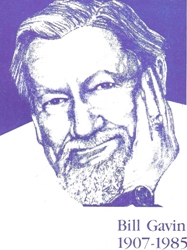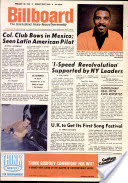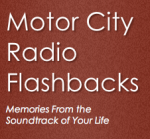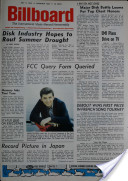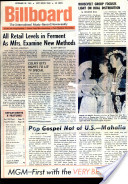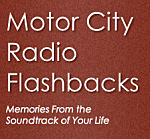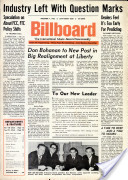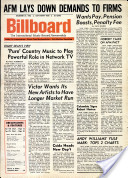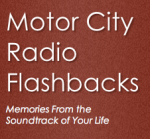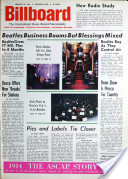 From the MCRFB NEWS archive: 1963
From the MCRFB NEWS archive: 1963
The Bill Gavin Newsletter (July 13, 1963)
From the Desk of Bill Gavin Billboard Contributing Editor
I T N E V E R C E A S E S T O A M A Z E M E how many letters I get ask that question. Quite a few inquiries come from members of the Armed Forces Radio Service. Apparently they like what they’re doing and want to continue this friendly association with records, turntables and microphones in civilian life. This week’s newsletter is directed to these — and other — aspiring young DJ candidates.
 Why do you want to be to be a disk jockey? Ask yourself, and be sure that the answers check with the facts. Let’s look at some of the answers:
Why do you want to be to be a disk jockey? Ask yourself, and be sure that the answers check with the facts. Let’s look at some of the answers:
“DISK JOCKEYS MAKE BIG MONEY.” Two or three big names are said to make over $70,000 a year. Another 200 or so DJ jobs pay upwards of $15,000 a year. However, the big majority of DJ’s in the United States — several thousands of them — earn less than $7,500 a year. You might be surprised to learn how many of this number take home less than $100 a week. (These are my personal estimates and are not based on income tax statistics). The chances are about 10 to 1 you’re ever going to make more than $10,000 a year as a disk jockey. That means that you have to be better than 90 per cent of all the disk jockeys in the country in order to make that kind of salary.
“THE HOURS ARE GREAT!” Three or four hours a day, six days a week, sounds like a breeze. The facts are that most disk jockeys in the country have no union protection on hours or working conditions. Many of them are assigned — so help me! — janitorial work. It’s common in smaller towns for DJ’s to double as salesmen. While this may sound like a fine opportunity to increase income through sales commission, all too often it means a 12-hour day and a total take home pay that averages a little better than over a dollar an hour.
“DISK JOCKEYS ARE LOOKED UP TO AS PRETTY IMPORTANT PEOPLE.” If your record programming can break hits for thousands of sales in your city, you’ll be important to the record people. Recording artists may phone you and say, “Thanks for all your help.” If you build a large teen audience, your name will attract them to your record hops. If you run a high-rated show, you’ll be important to some of the local advertisers. But in the community at large the occupation of the disk jockey does not carry any particular prestige. You’ll be surprised how many people never heard of you.
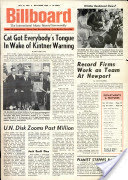
“THERE ARE LOTS OF OPPORTUNITIES IN RADIO.” There are opportunities in any business for constructive ideas and accomplishment. In radio there is still room for new techniques and ideas, but not as much room as there was a few years ago. Station managers in general are a pretty conservative group, and appear to be getting more so. There’s a growing tendency to restrict the freedom of deejays and to control things more closely from the front office. This is especially true of the top stations in large cities. Only in the growing field of FM radio we find a willingness to experiment. In AM radio it’s mostly a matter of giving the boss what he wants. Several DJ friends of mine — good men at important stations — are so fed up with stereotyped policies and front office control that they’re quietly looking around for berth in some smaller operation, where they’ll have a chance to make more use of their knowledge and ability. The best way to put your good ideas to work is to own a radio station yourself.
I F , A F T E R R E A D I N G T H I S F A R you still want to be a disk jockey, you should know that there are always jobs available in smaller cities and markets. As an inexperienced beginner trying to get in the field you will probably be wasting your time looking for a big city job. Besides, in a smaller market, you’ll have a chance to learn a lot more about radio in general.
Just how you locate these openings is up to you. If you know any record promotion people, they might tip you about some place where you can apply. You could also jump in your car and go driving through the hinterlands, monitoring local stations as you go. You might not come up with a job, but you’d learn a lot about radio. But then again, there are special training schools that help their graduates find DJ jobs. Some of these are good, others are phonies. Be sure to check out the track record before you decide to enroll in one.
Finding a job isn’t as important as growing with it. Don’t let the excitement of air work trap you in a blind alley after you’re 45. You’ll find more old age security with a desk job than behind a mike.
Good luck! END
___
(Information and news source: Billboard; July 13, 1963)
![]()

